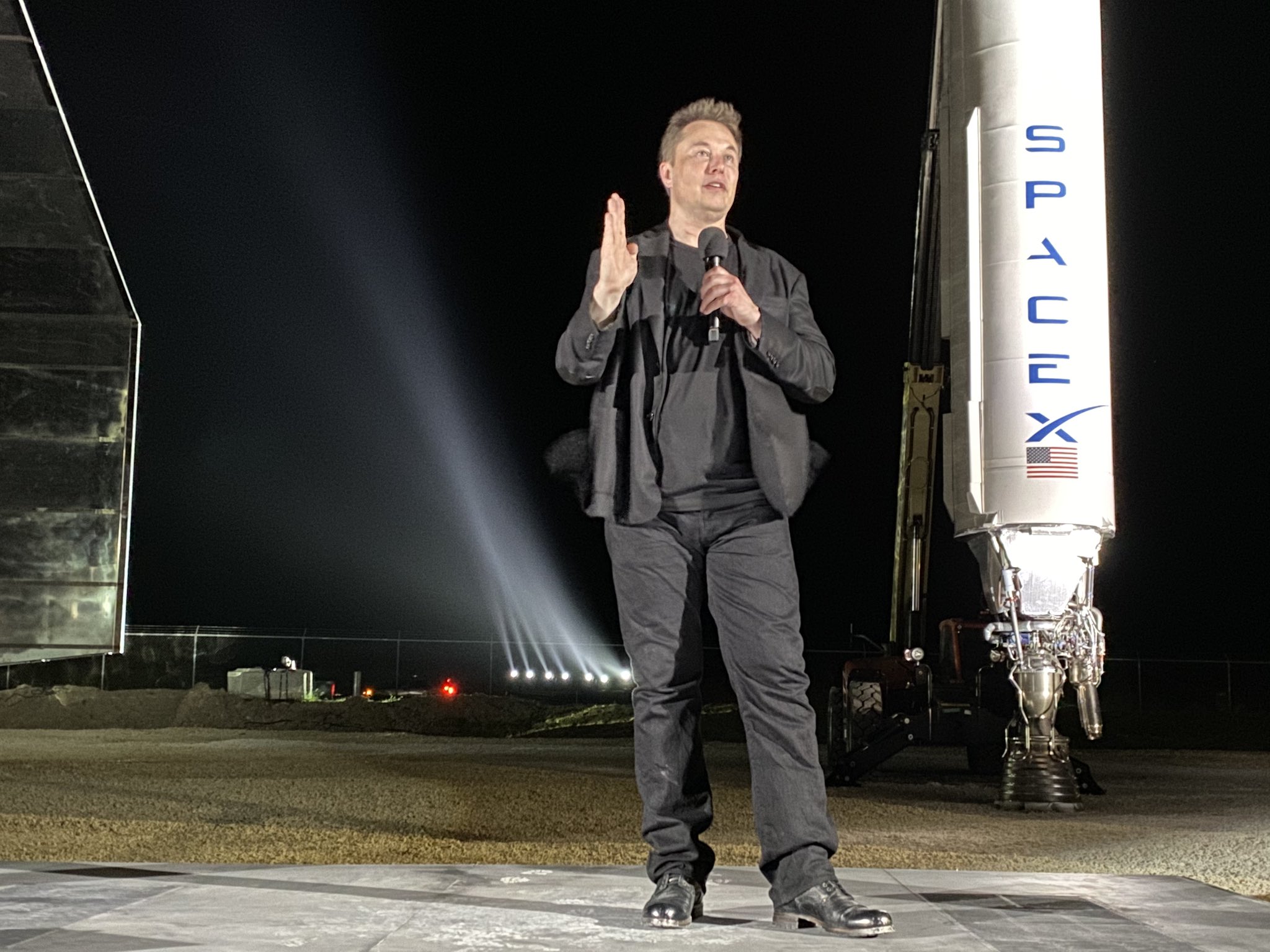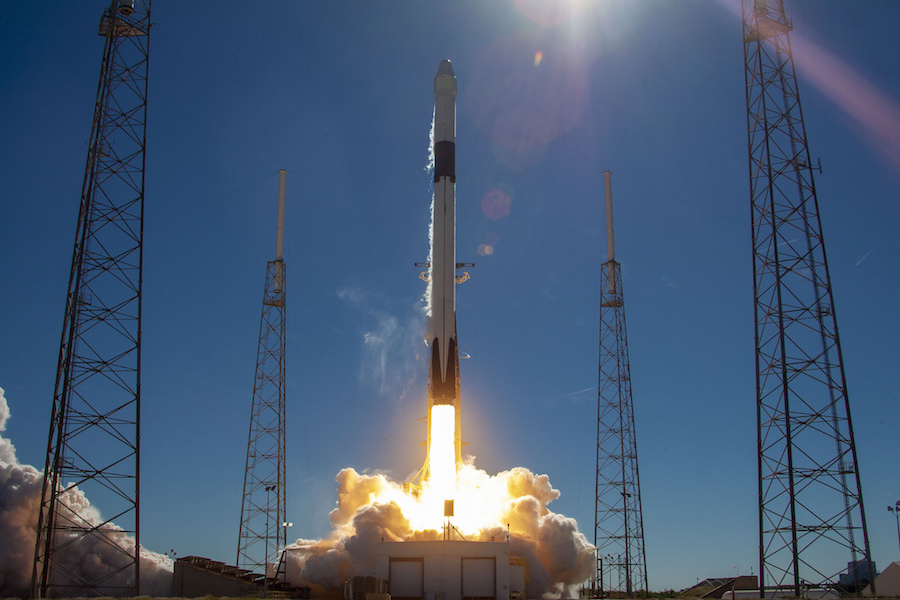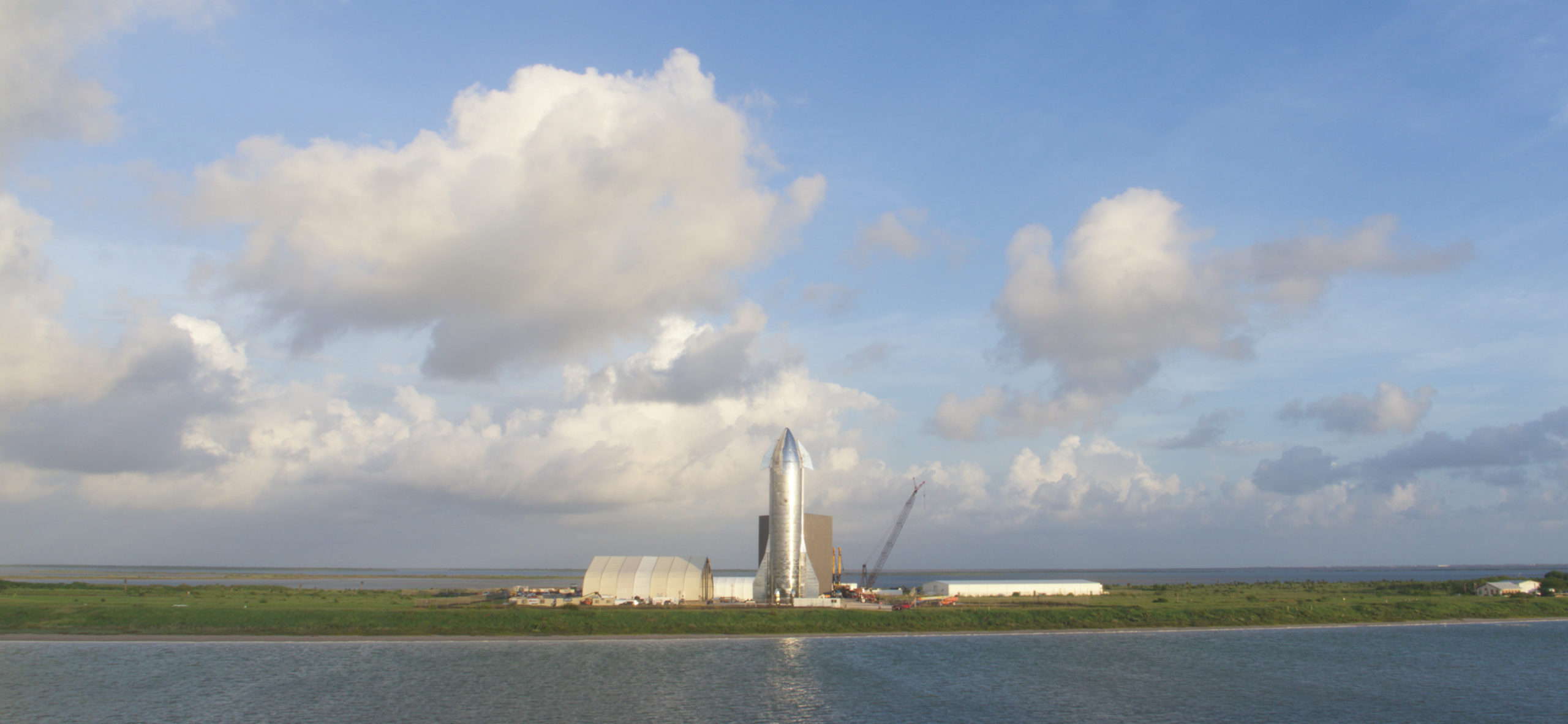After a highly anticipated test launch, SpaceX‘s Starship SN11 prototype finally lifted off for a planned test flight. Climbing up from out of the cloud deck at the company’s South Texas test site in Boca Chica, the vehicle reached a final altitude of approximately 10 kilometers on a foggy morning on March 30, 2021. After shutting down the first and second Raptor engines at the seven- and eight-kilometer mark, the fully reusable spacecraft climbed up higher to the lower pressure apogee on a single-engine before hovering and beginning a belly flop reorientation maneuver and successfully navigated fast toward the ground. However, the five-minute test campaign experienced an anomaly during the landing sequence that led to a subsequent explosion on the pad with plenty of debris hitting the ground.

A spectator holding a fragment of Starship SN11 near the landing pad in SpaceX’s Boca Chica site, minutes after the explosion on March 30, 2021. Image courtesy of user @homemeetsroad via Twitter.
Before that, on a clear afternoon in early March 2021, SpaceX’s previous Starship prototype SN10 successfully ascended more than 32,000 feet before making its way back to Earth in a controlled descent. Just minutes after touching the ground, it was consumed in an explosive fireball. Watching spacecraft explode and disappear in a matter of minutes is heartbreaking for the teams that spent years building them. SpaceX has seen a few failures over the past 20 years – which are still much smaller than its successes. Even company founder and big tech entrepreneur Elon Musk has repeatedly emphasized: “If you aren’t failing, you aren’t innovating enough.” This yin and yang business balance has led SpaceX to where it is now, on the verge of deep space exploration.
According to Musk, the Starship is not just any reusable heavy-lift rocket; it could one day deliver crewed missions to the moon and Mars and is the company’s top priority. Determined to be an integral part of space history, Musk and his company’s ambition and perseverance could one day take humanity to the vast reaches of outer space. In the meantime, a review of recent experiences can give us a glimpse of what’s next for the company.
In its quest to redefine space transportation, SpaceX is revolutionizing launch vehicle and rocket engine development while reducing the cost of access to space. Elon Musk’s $74 billion company has been leading private launches worldwide for years. Part of its manufacturing strategy is to incorporate advanced technologies, like additive manufacturing (AM). SpaceX began using 3D printing on spaceflight hardware in 2014 when its Falcon 9 rocket launched into space carrying a 3D printed Main Oxidizer Valve (MOV) body in one of its nine Merlin 1D engines. This was followed by the fully printed SuperDraco thruster to power the Dragon spacecraft capsule’s launch escape system. Currently, the SpaceX AM team works to create powder bed platforms for developing and building rocket engines.
SpaceX’s pioneering liquid-fueled rockets and surging tech innovation are helping democratize access to space. In 2008, the Falcon 1 (named after the fictional Star Wars spacecraft Millennium Falcon) became the first privately developed liquid-fuel launch vehicle to go into Earth’s orbit. Even though Falcon’s success is unquestionable today, the first version ever tested failed just 25 seconds after the flight lifted off due to corrosion between a nut and a fuel line that had allowed the line to leak, causing an engine fire. Faithful to Musk’s core beliefs, the company moved forward and has since been on an unstoppable growth trajectory, with a significant part of its funding coming from NASA.
 Elon Musk presenting in front of Starship MK 1 and Falcon 1. Image credit Jack Beyer.
Elon Musk presenting in front of Starship MK 1 and Falcon 1. Image credit Jack Beyer.The contracts with the U.S. space agency have even funded part of the original development of SpaceX’s reusable Falcon 9 rocket, which is today the backbone of the company. Falcon 9 has delivered cargo to and from the International Space Station (ISS) for over eight years and generates close to a billion dollars annually. In fact, according to Forbes estimates, as of 2019, SpaceX charged about $60 million per Falcon 9 launch and between $90 million to $150 million per Falcon Heavy launch. Following the Trefis team for Forbes analysis, SpaceX’s revenues should be $1.2 billion in 2020.
Although currently the only source of revenue for the company, these commercial resupply missions are just the tip of the iceberg, as SpaceX has even bigger plans ahead. Musk has hinted at the possibility of a real “Starfleet,” referencing the fictional space force fleet in the Star Trek franchise that handles defense and peacekeeping missions. During the 2020 Air Force Association’s annual Air Warfare Symposium, Musk said, “We’ve gotta make Starfleet happen” so that we see “big spaceships that can go far places” and a “Space Force” in our lifetime. The pioneering entrepreneur hopes to drive the innovation rate for big breakthroughs in space technology soon for any of this to happen.
 SpaceX’s Falcon 9 rocket lifts off from pad 40 at Cape Canaveral Air Force Station, Florida. Image courtesy of SpaceX.
SpaceX’s Falcon 9 rocket lifts off from pad 40 at Cape Canaveral Air Force Station, Florida. Image courtesy of SpaceX.For now, the Dragon spacecraft powered by Falcon 9 is making great strides to move space exploration forward. After over 20 trips to the orbiting laboratory, it began flying crew to the ISS in 2020 under NASA’s Commercial Crew Program to become the first private company to launch astronauts into orbit. Yet, the Starship launch system for interplanetary spaceflight is intended to become the primary orbital vehicle at SpaceX once it is operational, replacing Falcon 9 and Dragon. With so many new missions on the horizon, SpaceX’s next-generation Raptor engines have already begun flight testing on the Starship prototype rockets in July 2019.
SpaceX aims at a lifetime of 1,000 flights for Raptor, the highest thrust to weight engine ever made. According to the company, the manufacturing process includes quite a few 3D printed parts, enabling cost reductions and the production of the lightest parts possible. The printed components include propellant valves, turbopump parts, and many of the injectors’ critical parts for the initial engine development testing, which increases the speed of development and iterative testing.
 Three Raptor engines at the base of Starship. Image courtesy of SpaceX.
Three Raptor engines at the base of Starship. Image courtesy of SpaceX.Musk is highly confident that Starship’s crewed missions will arrive on Mars by 2026 and will be capable of carrying cargo on long-duration interplanetary flights and to the dark side of the moon for just $2,000 per kilo. In 2023, Japanese entrepreneur Yusaku Maezawa and the crew of the lunar tourism project dearMoon will become the first civilian passengers on a lunar Starship mission featuring a fly-by of the Moon during their week-long journey.
But before any of this happens, the launch vehicle needs to pass several tests. In 2020, SpaceX’s Starship prototype got closer to the highly anticipated test flight as the SN4 version of the spacecraft survived a critical cryogenic pressure test, followed by several more challenging tests. Next, the single Raptor engine SN5 prototype successfully took to the skies in August for about 40 seconds in its first test flight after several of its predecessors were destroyed during pressurization or engine-firing tests.
 Starship in Cameron County, Texas. Image courtesy of SpaceX.
Starship in Cameron County, Texas. Image courtesy of SpaceX.After a few more successful tests, the SN8 followed its first triumphant high-altitude flight with a hard landing and fierce explosion. So did the SN9, which flew to an altitude of 6.2 miles in February 2021, shutting off its three engines in sequence as it climbed higher. Then it came in for another hard landing, with the impact leading to another fireball, consuming the entire spaceship in seconds.
The SN11 launch wrapped up all qualification testing fast. Just two days after SN10 exploded, SN11 shipped to the Boca Chica site to complete ambient-temperature and cryogenic proof testing. SpaceX has been gradually speeding up the technical and regulatory process for its prototype tests. Starship SN10 took just 33 days to go from pad arrival to liftoff and spent only eight days between its first static fire and launch attempts. SN11 launched even quicker.
 Starship at a Martian colony. Image courtesy of SpaceX.
Starship at a Martian colony. Image courtesy of SpaceX.The final Starship vehicle that will soar to orbit will need six Raptors, stand about 165 feet tall, and carry up to 100 people, Musk explained in the past. The operational Starship will launch from Earth atop a gigantic rocket called Super Heavy powered by 31 Raptor engines. Part of the appeal is its rapid reusability expectation. Musk said that just like planes are ready for the next flight in an hour, Starship will be geared up and ready to take off again pretty soon after arriving, cutting the cost of spaceflight to make crewed trips to and from the moon, Mars, and other deep-space destinations accessible.
SpaceX is helping shape the future of humanity in space by creating advanced reusable rocket technology. After every spacecraft is disassembled during testing, company engineers are learning more. SN10 may have blown up after landing, but it was still the first Starship to make it back to the pad in one piece. SN11’s challenge was to once again complete the milestones through to landing – which it almost did. According to NASA, this vehicle will be the last of the current prototypes, with the next one donning unknown modifications hinted at by Musk on social media some time ago.
“Failure is essentially irrelevant unless it is catastrophic,” says Musk.
With so many plans for the coming decade, we can expect SpaceX to continue tracing the path towards a bright future off-Earth.
Subscribe to Our Email Newsletter
Stay up-to-date on all the latest news from the 3D printing industry and receive information and offers from third party vendors.
You May Also Like
Precision at the Microscale: UK Researchers Advance Medical Devices with BMF’s 3D Printing Tech
University of Nottingham researchers are using Boston Micro Fabrication‘s (BMF) 3D printing technology to develop medical devices that improve compatibility with human tissue. Funded by a UK grant, this project...
3D Printing Webinar and Event Roundup: April 21, 2024
It’s another busy week of webinars and events, starting with Hannover Messe in Germany and continuing with Metalcasting Congress, Chinaplas, TechBlick’s Innovation Festival, and more. Stratasys continues its advanced training...
3D Printing Webinar and Event Roundup: March 17, 2024
It’s another busy week of webinars and events, including SALMED 2024 and AM Forum in Berlin. Stratasys continues its in-person training and is offering two webinars, ASTM is holding a...
3D Printed Micro Antenna is 15% Smaller and 6X Lighter
Horizon Microtechnologies has achieved success in creating a high-frequency D-Band horn antenna through micro 3D printing. However, this achievement did not rely solely on 3D printing; it involved a combination...





























